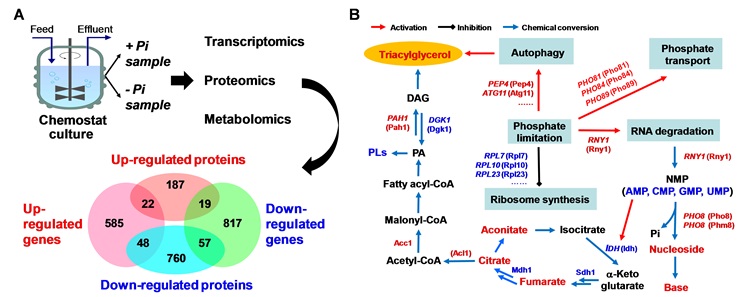Microbial lipids produced by oleaginous yeasts from biomass are potential feedstock for advanced biofuels and oleochemicals. However, low-cost raw materials usually contain rich nitrogenous components, which inhibit the process of cellular lipid accumulation.
To solve this problem, Prof. ZHAO Zongbao and his co-workers at Dalian Institute of Chemical Physics (DICP) of the Chinese Academy of Sciences annotated the genome of an excellent lipid producer (Nat. Commun.), and found that phosphate (Pi) limitation could effectively promote the conversion of sugars into lipids (Bioresour. Technol.).
Recently they took systems biology approaches to delineate the mechanisms of Pi-limitation-induced lipid accumulation and their findings were published in Biotechnology for Biofuels.

Systems analysis of Pi-limitation-induced microbial lipid production by oleaginous yeast.
A: Results of systems analysis. B: Processes responding to Pi-limitation for lipid production. (Image by NING Siyang)
The researchers found that Pi-limitation activates phosphor-related metabolism, RNA degradation and TAG biosynthesis, while inhibits ribosome biosynthesis and TCA cycle, leading to enhanced carbon fluxes into lipids. Notably, it guided the construction of an engineered strain with significantly improved lipid production capacity under Pi-limitation.
Moreover, it greatly enriches our understanding on microbial oleaginicity and Pi-related metabolism. And the systems data may facilitate designing advanced cell factories for production of lipids and related oleochemicals. (Text by NING Siyang)